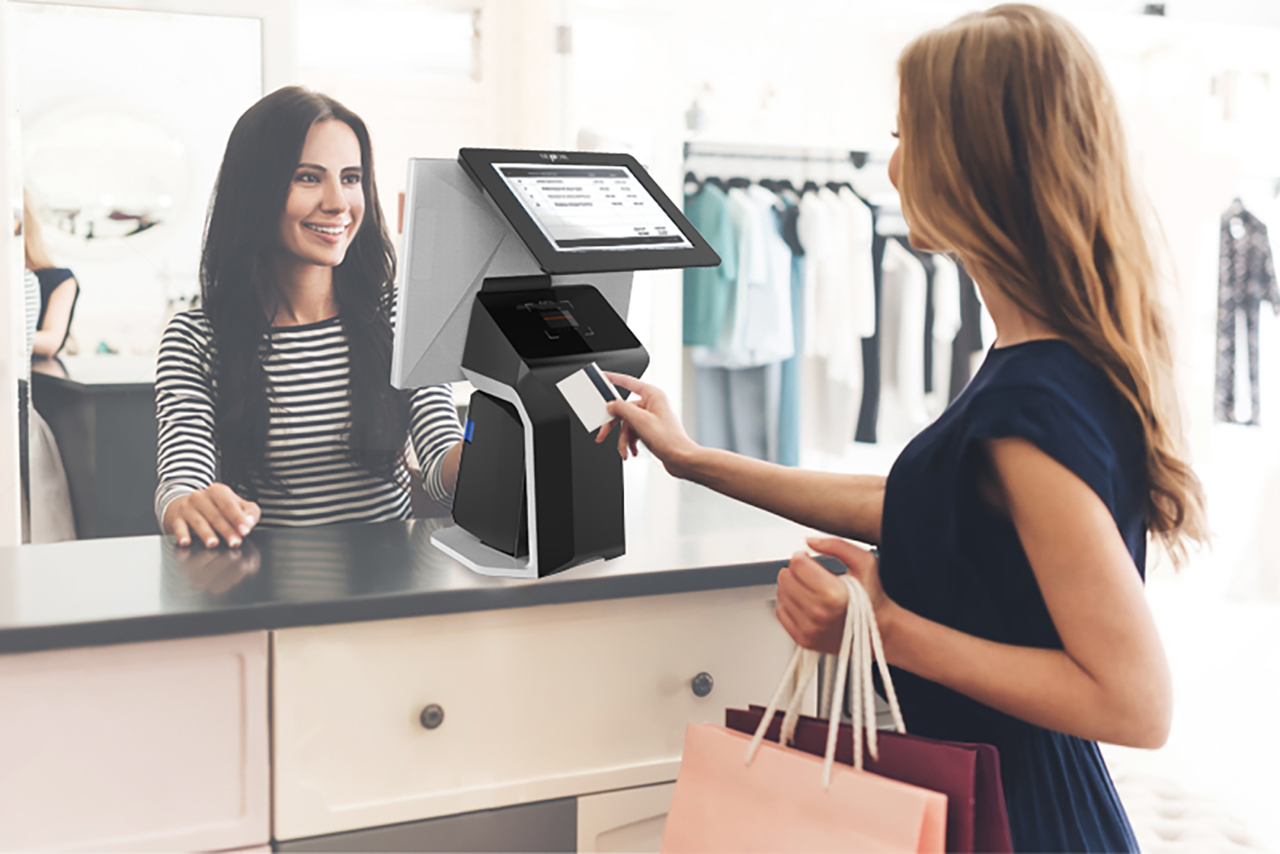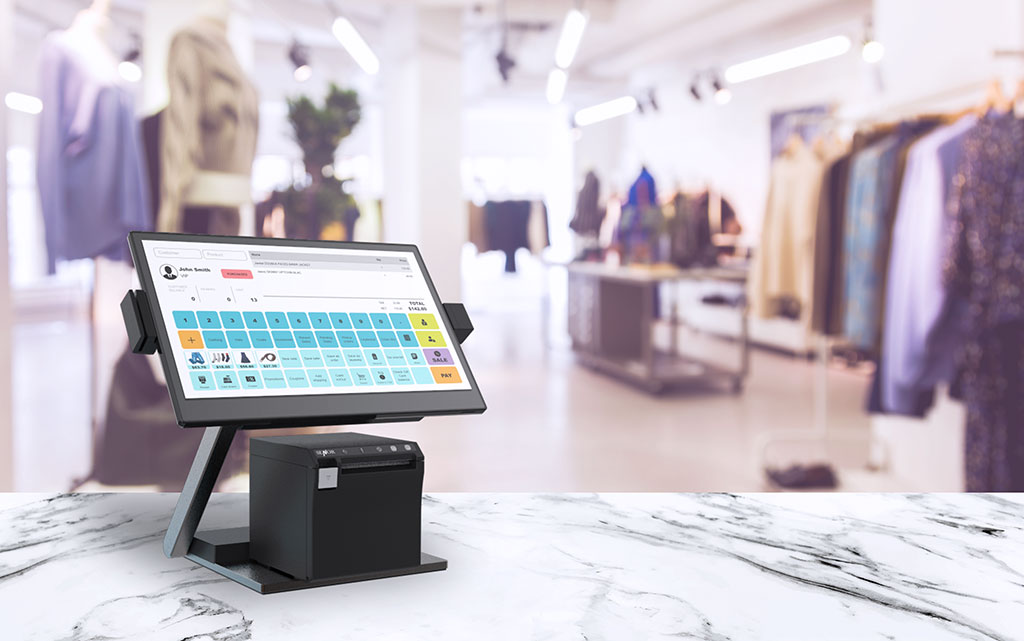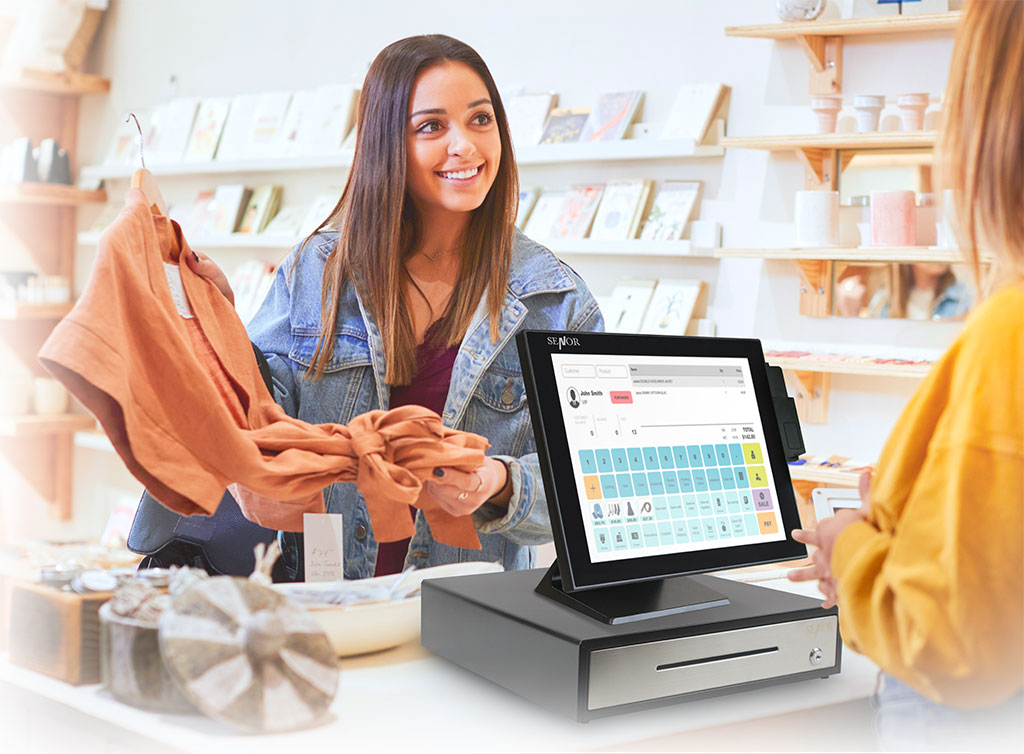SENOR AIO touch POS terminals (all-in-one touch point of sale) are computerized systems that combine the various components required for point-of-sale operations into one device. These terminals typically include touchscreen monitors, computer systems, cash registers, and other peripherals such as barcode scanners, receipt printers, and card readers.
The main purpose of the AIO touch POS terminal is to simplify and automate the sales process in various retail and hospitality environments. Tablet pos system manufacturer a good helper for your marketing.
What is SENOR AIO touch POS terminals includes?
SENOR AIO touch POS terminals / tablet based pos system typically include the following components:
- Touchscreen Display:
SENOR AIO touch POS terminals feature an integrated touchscreen display for user interaction. The touchscreen allows users to input sales information, navigate through menus, select options, and complete transactions. - Computer System:
These terminals are equipped with a built-in computer system that runs the POS software and handles transaction processing. The computer system includes a processor, memory, storage devices, and an operating system. - Cash Register:
SENOR AIO touch POS terminals have an integrated cash register functionality for calculating the sales amount, processing payment methods (such as cash, credit cards, gift cards), and generating receipts. - Barcode Scanner:
POS terminals from SENOR usually come with a barcode scanner for quickly scanning product barcodes to add them to the transaction and retrieve product information. - Receipt Printer:
In order to print sales receipts, SENOR AIO touch POS terminals include a built-in receipt printer. It can print receipts that contain information such as item details, transaction amounts, dates, and times. - Card Reader:
AIO touch POS terminals typically include a card reader for accepting credit card or debit card payments. This allows customers to complete payments by inserting or swiping their cards.
Additionally, depending on specific application requirements, SENOR AIO touch POS terminals may also include additional components such as:
- Cash Drawer:
Used for securely storing cash and coins. - Printer:
In addition to the receipt printer, they may include other types of printers such as label printers or report printers. - Customer Display:
Used to display the sales amount and transaction information for customers to view. - Kitchen Printer:
An additional component commonly found in the food service industry for sending orders to the kitchen or bar for printing.
Overall, SENOR AIO touch POS terminals encompass a touchscreen display, computer system, cash register, barcode scanner, receipt printer, and card reader to facilitate efficient sales processing and payment operations. Depending on specific requirements, additional devices may also be included. If you have further needed, welcome to contact us.
How’s the SENOR AIO touch POS terminals applications?
Here are some common applications of AIO touch POS terminals:
- Retail Stores:
AIO touch POS terminals are widely used in retail stores for processing sales transactions. They allow sales associates to scan barcodes, process payments, and print receipts efficiently. The touch interface makes it easy to navigate through product catalogs, update inventory, and manage customer information. - Restaurants and Food Service:
In the food service industry, AIO touch POS terminals are used for order taking, menu management, and payment processing. They enable waitstaff to quickly send orders to the kitchen, customize orders based on customer preferences, split bills, and integrate with kitchen printers or display systems for efficient food preparation. - Hospitality and Hotels:
AIO touch POS terminals are utilized in hotels for managing guest services, including check-in and check-out processes, room charges, and folio management. They can integrate with property management systems to provide a centralized solution for front desk operations. - Entertainment Venues:
AIO touch POS terminals find applications in amusement parks, theaters, and other entertainment venues for ticket sales, concessions, and merchandise transactions. They help streamline the sales process, reduce waiting times, and track inventory. - Healthcare Facilities:
Some healthcare facilities employ AIO touch POS terminals for managing patient billing and payment processing. They integrate with electronic health record systems to streamline administrative tasks and provide accurate billing information. - Convenience Stores:
AIO touch POS terminals are used in convenience stores to process sales, manage inventory, and track purchases. They often include features like age verification for restricted items, loyalty program integration, and real-time reporting.
Overall, SENOR AIO touch POS terminals offer a comprehensive solution for managing sales transactions, inventory control, and customer management in various business settings. Their efficiency, ease of use, and integration capabilities make them valuable tools for improving operational processes and enhancing the customer experience.
How to choose an AIO touch POS terminal?
When choosing an AOI touch POS terminal, several factors should be considered to ensure that the chosen system meets the specific needs of your business. Here are some key considerations to guide you in the selection process:
- Functionality and Features:
Evaluate the functionality and features offered by the POS terminal. Consider whether it includes essential features like barcode scanning, receipt printing, cash drawer, card reader, and compatibility with various payment methods. Determine if the system supports additional features you may require, such as customer displays, integrated scales, kitchen printing, or compatibility with specific peripherals. - Software Compatibility:
Assess the compatibility of the POS terminal with the software applications you plan to use. Ensure that the system is compatible with your chosen POS software or that it offers its own comprehensive software solution. Consider whether the software supports your industry-specific needs, such as retail, hospitality, or service-oriented businesses. - Ease of Use and Interface:
Look for a user-friendly interface that is intuitive and easy to navigate for your employees. The touchscreen computer should be responsive and provide a smooth user experience. Consider the training required for your staff to operate the system effectively. A system with a simple and intuitive interface will require less training time and minimize errors during transactions. - Durability and Build Quality:
POS terminals should be built to withstand the demands of daily use in a business environment. Look for terminals made of high-quality materials that are durable and resistant to wear and tear. Consider factors like spill resistance, dust protection, and overall build quality to ensure the terminal can withstand the conditions of your business environment. - Connectivity and Integration:
Assess the connectivity options provided by the POS terminal. Look for support for Wi-Fi, Ethernet, or other networking options that suit your business needs. Determine if the system can integrate with other essential business systems or software, such as accounting software, inventory management, or customer relationship management (CRM) systems. - Scalability and Expansion:
Consider the scalability of the POS terminal. Evaluate whether it can accommodate the growth of your business, such as supporting multiple locations or handling increased transaction volumes. Assess the expandability of the system, including the ability to add additional peripherals or accessories as your business requirements evolve. - Customer Support and Maintenance:
Research the reputation and reliability of the POS terminal manufacturer or provider. Consider their customer support options, including technical assistance, warranty coverage, and software updates. Determine if the terminal requires regular maintenance or if the provider offers remote monitoring and troubleshooting capabilities. SENOR TECH products have been introduced to nearly one hundred countries; SENOR is the company you can rely on! contact us now! - Cost and Budget:
Establish a budget for the POS terminal that aligns with your business requirements. Consider the total cost of ownership, including any additional software licensing fees, maintenance costs, and potential hardware upgrades. Compare prices from different vendors and assess the value for money offered by each system.



